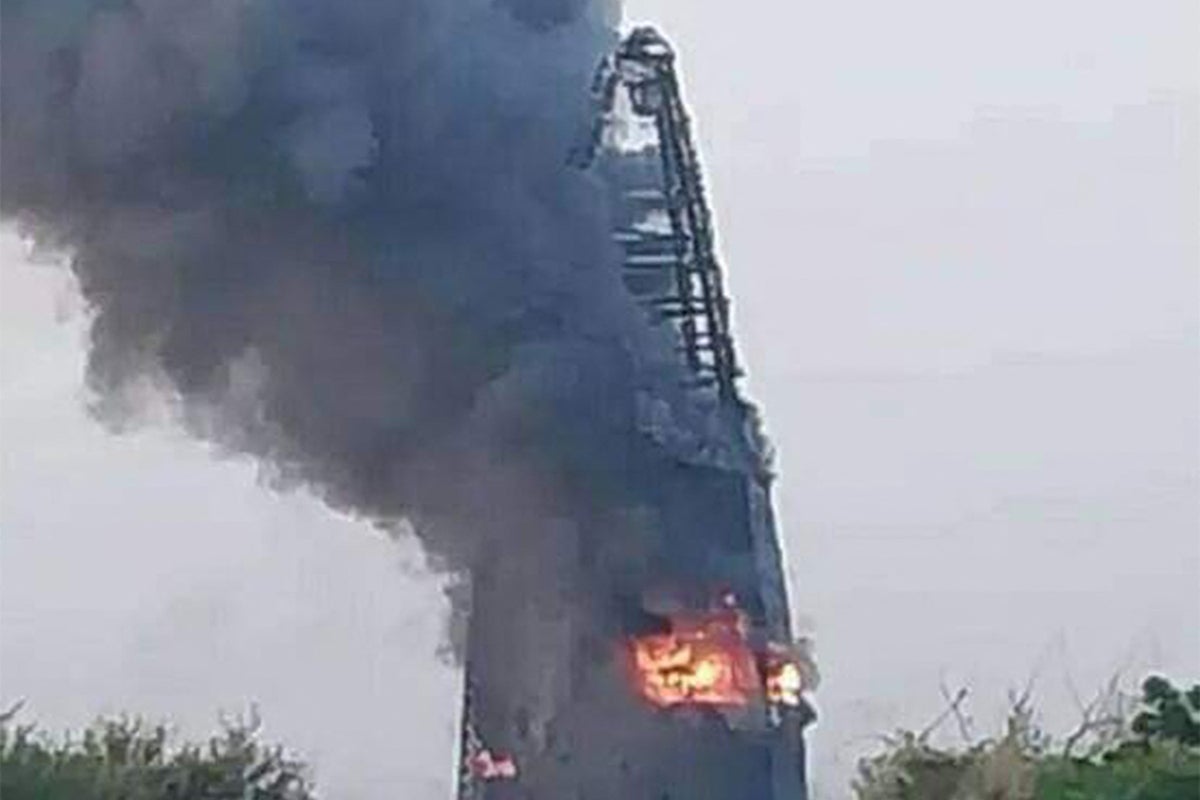
A massive fire that engulfed an iconic skyscraper amid internal turmoil in Sudan has been lamented by the building’s architect as “senseless destruction”.
The 18-storey Greater Nile Petroleum Oil Company Tower, that had become an emblem of capital Khartoum, was seen covered in flames early on Sunday during heavy fighting between the Sudanese army and the Rapid Support Forces (RSF).
Civil strife has raged on in Sudan for six months now.
Tagreed Abdin, the building’s senior architect in 2006, said seeing the skyscraper in flames was “truly painful”.
“The landmark project defined the skyline of Khartoum Such senseless destruction,” she said on X.
It remains unclear how the fire began in the huge building with a glass façade on all sides, and if there were any casualties.
Viral videos on social media showed a huge blaze swirling around the charred and blackened remains of one of the tallest buildings in the Sudanese capital.
A number of buildings and residential areas were consumed in the fire as well, as airstrikes struck Khartoum on 16 September, said the Sudan War Monitor, which provides analysis of the conflict.
It said the RSF targeted areas controlled by the army, including an office tower of the Justice Ministry, two buildings at General Command and the Sudan Standards and Metrology Organisation.
A fire raging fire at the Greater Nile Petroleum Oil Company Tower in Khartoum— (AFP via Getty Images)
Both the Sudanese army and RSF have deployed snipers in high-rise buildings, making it difficult for troops on either side to move freely, said the monito, making the buildings the target of attacks.
Sudan has been under the grip of violence since 15 April when a power struggle began between the country’s army led by General Fattah Burhan and the paramilitary RSF, led by General Mohamed Hamdan Dagalo.
It was followed by days of tensions as members of RSF were deployed around the country, a move seen by the army as a threat.
The conflict has killed more than 4,000 people and more than one million people have fled the country, according to figures released by the UN in August. The real toll is expected to be much higher.
Meanwhile, in the western Darfur region, the conflict has turned into ethnic violence, with RSF and Arab militia allies fighting with ethnic African groups, according to rights groups and the UN.







